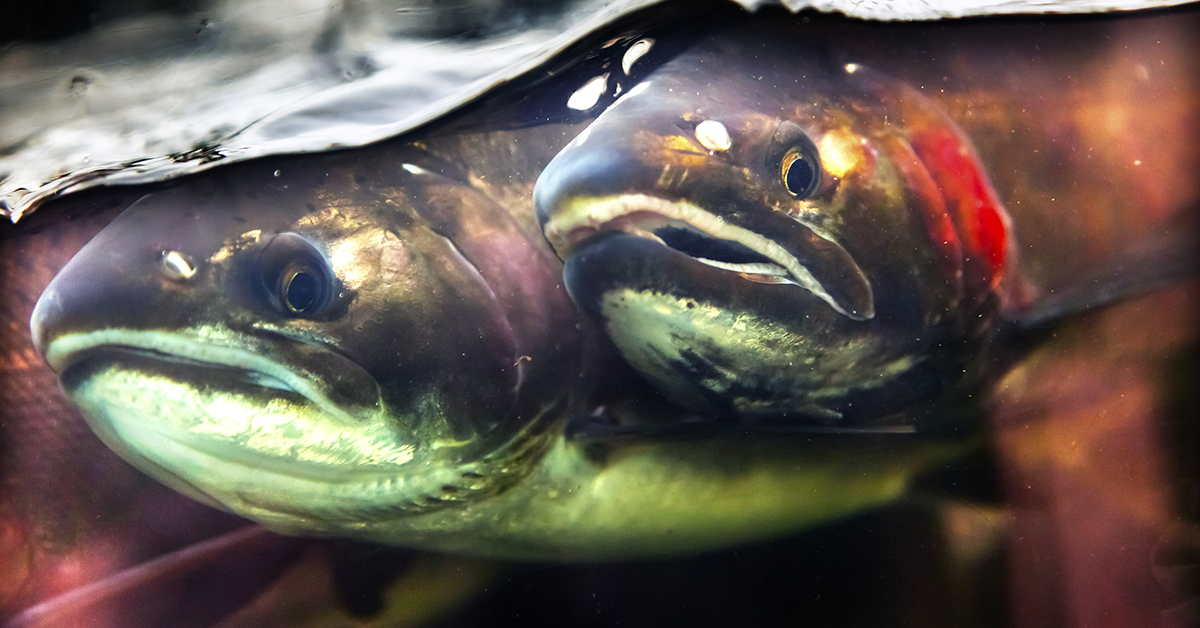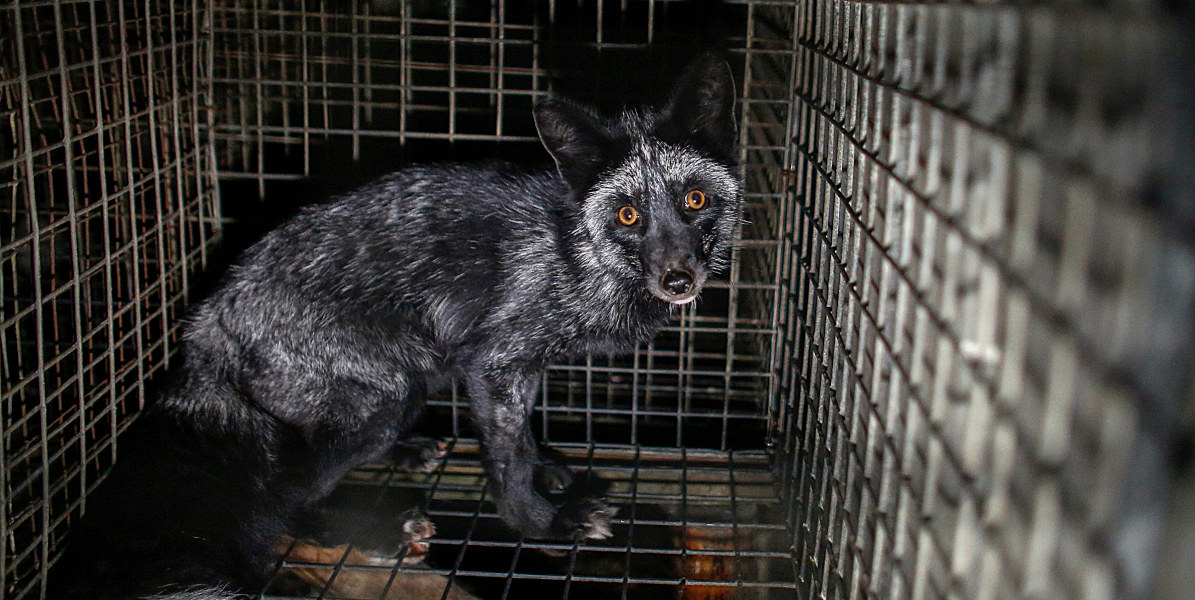Fish feel pain but have few rights – but what can we do about it?
I still remember the first time I went fishing with my grandfather, down to the Kokemäenjoki River. The act of killing a fish was a direct encounter with death and violence – something that has been erased from our relationship with farm animals. At the same time, that encounter was part of my conditioning to accept the naturalness of killing.
Killing fish has been normalised, becoming natural to many of us after our childhood fishing trips. It has also happened to friend of mine, who, on a sunny spring afternoon, indifferently remarked that they do “not eat meat, but sometimes fish”.
I have encountered this distinction so many times that I barely notice it anymore. This distinction between “meat” and “fish” is so common in language that our ears have grown numb to it. In the animal kingdom, fish are seen as inhabiting a totally separate world, because we are divided from them by the transparent film of the water’s surface.
Nevertheless, we must find ways to pierce that film, as an increasing number of researchers and animal rights activists feel it is time for us to extend discussions of animal rights to the rights of fish.
Our ambivalent relationship with fish
In 2016, the total production of fish for food in Finland amounted to approximately 14.4 million kilograms of fish, of which 90% was rainbow trout. We measure the numbers of these individuals not by number, but weight – an inherent objectification we are unable to get away from. It is fish farming in particular that is the root of the most grievous animal rights violations in the fishing sector. It is a form of animal production just as mechanised and unfeeling as the rearing of livestock. It seems, however, that the water’s edge has also become a border between empathy and political action to improve standards and indifference.
Of course, there are exceptions. One of the most upsetting pieces of animal news in recent years was the transportation of the dolphins held at the Särkänniemi dolphinarium from Tampere to Greece in 2016. People were outraged and the dolphins were in the news for weeks.
At the same time, it was clear that this was a special case. The issue was that these were dolphins that people somehow knew; they lived in the middle of our society, rather than in the ocean. Even taxonomically speaking, dolphins are not fish, but they live in water. The billions of fishes that swim around us generate similar kind of interest only if they are served as the main course.
Our relationship with fish is ambivalent. On the one hand, fish are treated with complete indifference, as a cheap biomass that we measure in kilograms rather than lives. On the other hand, we can form an emotional bond with individual aquatic animals, such as dolphins, and for many the most personal experience of encountering a conventionally edible animal generally relates to fish.
What do fish know and feel?
The concept of ‘fish’ is actually rather undefined. Fish do not form a clear-cut taxonomical class with definite boundaries; instead, the concept includes an endless multiplicity of different animals that live in water and breathe with gills. One of the best recent books on the diversity and various capabilities of fish is What a Fish Knows: The Inner Lives of Our Underwater Cousins by biologist Jonathan Balcombe.
What a Fish Knows starts with a description of killing a fish as a child. Balcombe is unusual in that he disseminates information on the diverse experiences of different animal species from new perspectives. He also wrote Pleasurable Kingdom: Animals and the Nature of Feeling Good, an interesting read on animals’ ability to experience pleasure and pain.
One of Balcombe’s central claims is that our relationship with fish is deficient. We do not understand their physiology, experiences, emotions or social behaviour. It is difficult to care about something you do not understand. The other claim, that fish feel pain, is understood by him and supported by a broad consensus among the scientific community but still rather confusing to the general public.
What a Fish Knows could just as easily be described as a long list of the latest discoveries in fish research. Fish, for example, exhibit sophisticated social relationships, and there is also at least anecdotal evidence of social interaction between fish and humans. Balcombe emphasises that fish are intelligent. The cognitive skills, such as memory, informational processing and problem solving, of many species of fish are on such a level that they do not warrant any line being drawn between them and mammals. Balcombe also points out that focusing on brain size when estimating intelligence is one of the many myths that disadvantage fish. This is because other structural features of the brain matter much more than size when it comes to assessing intelligence.
Balcombe also offers purely physiological reasons for why fish feel foreign to us. They look so different to us, and express themselves so differently from the ways we are used to, and this makes it difficult to form a relationship with them.

Are fish friends or food?
In 2017, philosopher Elisa Aaltola and researcher Sami Keto together published a book called Empatia – Myötäelämisen tiede (English: The Science of Empathy). In the book, the authors examine our ability to put ourselves in another’s place and to offer assistance – something we share with other species.
But why does our empathy not extend to fish?
I called Aaltola and asked her. She was delighted to hear that I was writing an article about fish and began by highlighting how the differences between fish and humans clearly pose a challenge.
“Whether we are able to extend our moral considerations to animals that are so different from us is a test to our moral abilities. Unlike many other animals, it is not possible to place fish into the mould of similarity or “cuteness”, Aaltola explained.
She continued that in the study of empathy, it is common to separate between projective empathy – whereby a human projects their own experience on others, seeing themselves in others, and affective empathy – whereby there is some allowance for differences and a willingness to accept others as they are. Encountering and showing empathy for fish demands the latter.
Fish are also disadvantaged by a certain tradition of thinking in which empathy is secondary to other concerns.
“Looking at this from a pro-animal perspective, it is clear that fish have what we call a mind. However, in philosophy, there has been scepticism surrounding the concept of animal minds. This conservative attitude can also stifle new discoveries. An empathic attitude to research that is open to the idea of animal minds can reveal new insights.”
A breakthrough in the rights of fish may be just around the corner. This would make it conceivable that tomorrow’s children will no longer be taught how to kill fish, but how to understand them.
We don’t know what we think we know about fish.
“Sometimes researches think that a cerebral cortex, or something resembling it, is a necessity for an animal to feel pain. From an evolutionary point of view, this is misleading. There are still backward ideas that animals must have a similar brain physiology to humans, even though our current understanding shows brains can have similar capabilities even if they differ in structure. For example, birds use parts of the brain to perform many skills for which humans would use the cerebral cortex. Some researchers, however, still have a hard time getting their heads around the idea that non-human animals can have what we think of as a mind .”
According to Aaltola, knowledge alone won’t automatically improve the status of fish. We must also awaken people’s empathy and appeal to their emotions. We must also remember that there is a social component to how our views are formed, which highlights the importance of working to gradually shift people’s general perceptions and attitudes.
We are on the journey towards a point where we can change the dialogue. Rather than talking about fish and aquatic life simply in terms of kilograms produced or slaughtered, we can start talking about the specific experiences, suffering and rights of individual fish.
A breakthrough in the rights of fish may be just around the corner. This would make it conceivable that tomorrow’s children will no longer be taught how to kill fish, but how to understand them. Laying the foundations for a new kind of relationship with fish is sure to be a slow process – but immeasurably worthwhile.
Translation: Johanna Koskinen.
Pictures: iStock.
References
Balcombe, Jonathan. 2016. What a Fish Knows. The Inner Lives of Our Underwater Cousins. Oneworld Publications.
Luonnonvarakeskus: Vesiviljely 2016 (in Finnish, opens in a new tab).
Order magazine
This article originally appeared in Animalia magazine 2/2018. Are you interested in the magazine? Join Animalia here (opens in a new tab) and receive the magazine as part of your membership. The magazine is only published in Finnish.






